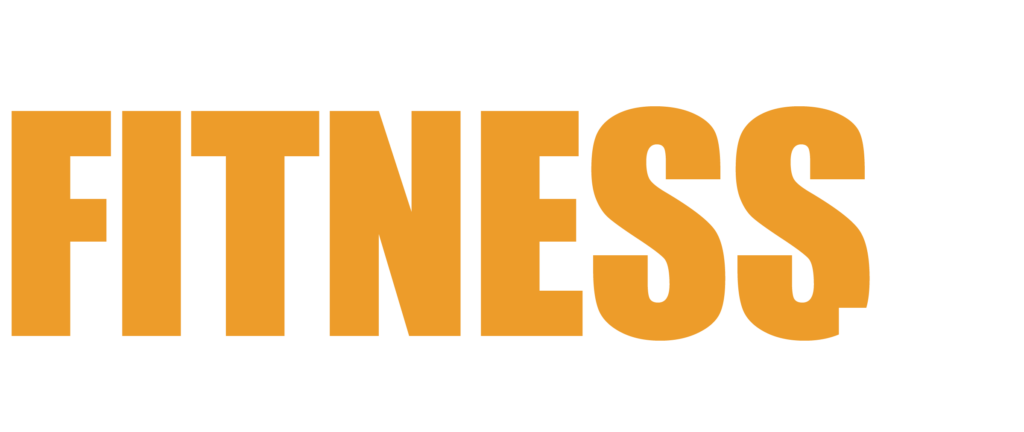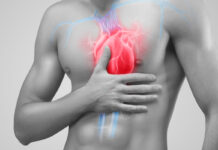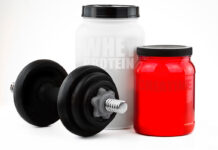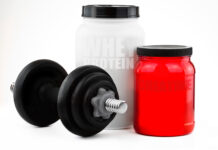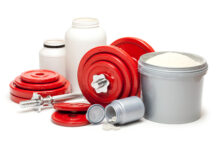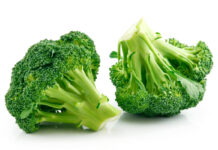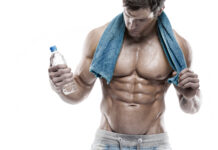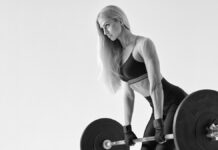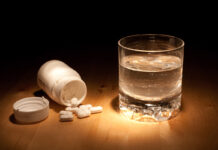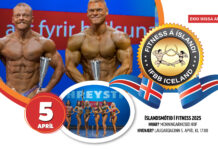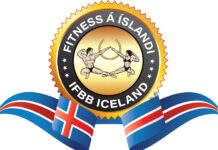Eftirfarandi er listi yfir bönnuð lyf og efni í samræmi við lista Alþjóða Ólympíunefndarinnar og IFBB Alþjóða fitness og vaxtarræktarsambandsins.
APPENDIX 1
IFBB ANTI-DOPING PROGRAM SUBSTITUTES APPENDIX A OF THE OMAC 1999
OLYMPIC MOVEMENT ANTI-DOPING CODE
APPENDIX A
PROHIBITED CLASSES OF SUBSTANCES AND PROHIBITED METHODS
2001-2002
1 September 2001
I. PROHIBITED CLASSES OF SUBSTANCES
A. Stimulants
Prohibited substances in class (A) include the following examples:
amineptine, amiphenazole, amphetamines, bromantan, caffeine*, carphedon, cocaine, ephedrines**,fencamfamin, formoterol ***, mesocarb, pentetrazol, pipradrol, salbutamol***, salmeterol***, terbutaline***, … and related substances.
* For caffeine, the definition of a positive is a concentration in urine greater than 12 micrograms per millilitre.
** For cathine, the definition of a positive is a concentration in urine greater than 5 micrograms per millilitre. For ephedrine and methylephedrine, the definition of a positive is a concentration in urine greater than 10 micrograms per millilitre. For phenylpropanolamine and pseudoephedrine, the definition of a positive is a concentration in urine greater than 25 micrograms per millilitre.
*** Permitted by inhaler only to prevent and/or treat asthma and exercise-induced asthma. Written notification by a respiratory or team physician that the athlete has asthma and/or exercise-induced asthma, is necessary to the relevant medical authority prior to competition. At the Olympics Games, athletes who request permission to inhale a permitted beta agonist will be assessed by an independent medical panel.
NOTE: All imidazole preparations are acceptable for topical use. Vasoconstrictors may be administered with local anaesthetic agents. Topical preparations (e.g. nasal, ophthalmological, rectal) of adrenaline and phenylephrine are permitted.
B. Narcotics
Prohibited substances in class (B) include the following examples:
buprenorphine, dextromoramide, diamorphine (heroin), methadone, morphine, pentazocine, pethidine, … and related substances.
NOTE: codeine, dextromethorphan, dextropropoxyphene, dihydrocodeine,
diphenoxylate, ethylmorphine, pholcodine, propoxyphene and tramadol are permitted.
C. Anabolic Agents
Prohibited substances in class (C) include the following examples:
1. Anabolic androgenic steroids
a. clostebol, fluoxymesterone, metandienone, metenolone, nandrolone,
19-norandrostenediol, 19-norandrostenedione, oxandrolone, stanozolol,
… and related substances.
b. androstenediol, androstenedione, dehydroepiandrosterone (DHEA),
dihydrotestosterone, testosterone*, … and related substances.
Evidence obtained from metabolic profiles and/or isotopic ratio measurements may be used to draw definitive conclusions.
* The presence of a testosterone (T) to epitestosterone (E) ratio greater than six (6) to one (1) in the urine of a competitor constitutes an offence unless there is evidence that this ratio is due to a physiological or pathological condition, e.g. low epitestosterone excretion, androgen producing tumour, enzyme deficiencies.
In the case of T/E greater than 6, it is mandatory that the relevant medical authority conducts an investigation before the sample is declared positive. A full report will be written and will include a review of previous tests, subsequent tests and any results of endocrine investigations. In the event that previous tests are not available, the athlete should be tested unannounced at least once per month for three months. The results of these investigations should be included in the report. Failure to co-operate in the investigations will result in declaring the sample positive.
2. Beta-2 agonists
bambuterol, clenbuterol, fenoterol, formoterol*, reproterol, salbutamol*,
salmeterol*, terbutaline*, … and related substances.
*Authorized by inhalation as described in Article (I.A.).
For salbutamol the definition of a positive under the anabolic agent category is a concentration in urine greater than 1000 nanograms per millilitre.
D. Diuretics
Prohibited substances in class (D) include the following examples:
acetazolamide, bumetanide, chlortalidone, etacrynic acid, furosemide,
hydrochlorothiazide, mannitol*, mersalyl, spironolactone, triamterene,
… and related substances.
* Prohibited by intravenous injection.
E. Peptide hormones, mimetics and analogues
Prohibited substances in class (E) include the following examples and their analogues and mimetics:
1. Chorionic Gonadotrophin (hCG) prohibited in males only;
2. Pituitary and synthetic gonadotrophins (LH) prohibited in males only;
3. Corticotrophins (ACTH, tetracosactide);
4. Growth hormone (hGH);
5. Insulin-like Growth Factor (IGF-1); and all the respective releasing factors and their analogues;
6. Erythropoietin (EPO);
7. Insulin;
permitted only to treat athletes with certified insulin-dependent diabetes. Written
certification of insulin-dependent diabetes must be obtained from an endocrinologist or team physician.
The presence of an abnormal concentration of an endogenous hormone in class (E) or its diagnostic marker(s) in the urine of a competitor constitutes an offence unless it has been proven to be due to a physiological or pathological condition.
II. PROHIBITED METHODS
The following procedures are prohibited:
1. Blood doping: means the administration of blood, red blood cells and/or related blood products to an athlete, which may be preceded by withdrawal of blood from the athlete, who continues to train in such a blood-depleted state.
2. Administering artificial oxygen carriers or plasma expanders;
3. Pharmacological, chemical and physical manipulation.
III. CLASSES OF PROHIBITED SUBSTANCES IN CERTAIN CIRCUMSTANCES
A. Alcohol
Where the rules of a responsible authority so provide, tests will be conducted for ethanol.
B. Cannabinoids
Where the rules of a responsible authority so provide, tests will be conducted for
cannabinoids (e.g. Marijuana, Hashish). At the Olympic Games, tests will be conducted for cannabinoids. A concentration in urine of 11-nor-delta 9-tetrahydrocannabinol-9-carboxylic acid (carboxy-THC) greater than 15 nanograms per millilitre constitutes doping.
C. Local anaesthetics
Injectable local anaesthetics are permitted under the following conditions:
a. bupivacaine, lidocaine, mepivacaine, procaine, and related substances, can be used but not cocaine. Vasoconstrictor agents may be used in conjunction with local anaesthetics;
b. only local or intra-articular injections may be administered;
c. only when medically justified.
Where the rules of a responsible authority so provide, notification of administration may be necessary.
D. Glucocorticosteroids
The systemic use of glucocorticosteroids is prohibited when administered orally, rectally, or by intravenous or intramuscular injection.
When medically necessary, local and intra-articular injections of glucocorticosteroids are permitted. Where the rules of a responsible medical authority so provide, notification of administration may be necessary.
E. Beta-blockers
Prohibited substances in class (E) include the following examples:
acebutolol, alprenolol, atenolol, labetalol, metoprolol, nadolol, oxprenolol,
propranolol, sotalol,
… and related substances.
Where the rules of a responsible authority so provide, tests will be conducted for beta-blockers.
SUMMARY OF URINARY CONCENTRATIONS
ABOVE WHICH IOC ACCREDITED LABORATORIES
MUST REPORT FINDINGS FOR SPECIFIC SUBSTANCES
caffeine > 12 micrograms/millilitre
carboxy-THC > 15 nanograms/millilitre
cathine > 5 micrograms / milliltre
ephedrine > 10 micrograms / milliltre
epitestosterone > 200 nanograms / millilitre
methylephedrine > 10 micrograms / millilitre
morphine > 1 microgram / millilitre
19-norandrosterone > 2 nanograms /millilitre in males
19-norandrosterone > 5 nanograms/millilitre in females
phenylpropanolamine > 25 micrograms / millilitre
pseudoephedrine > 25 micrograms / millilitre
salbutamol
(as stimulant) > 100 nanograms/millilitre
(as anabolic agent) >1000 nanograms/millilitre
T/E ratio > 6
IV. OUT-OF-COMPETITION TESTING
Unless specifically requested by the responsible authority, out-of-competition testing is directed solely at prohibited substances in class I.C. (Anabolic Agents), I.D. (Diuretics), I.E. (Peptide Hormones, Mimetics and Analogues), and II (Prohibited Methods).
LIST OF EXAMPLES OF PROHIBITED SUBSTANCES
AND PROHIBITED METHODS
CAUTION: This is not an exhaustive list of prohibited substances. Many substances that do not appear on this list are considered prohibited under the term „and related substances“. Athletes must ensure that any medicine, supplement, over-the-counter preparation or any other substance they use does not contain any Prohibited Substance.
STIMULANTS:
amineptine, amfepramone, amiphenazole, amphetamine, bambuterol, bromantan, bupropion, caffeine, carphedon, cathine, cocaine, cropropamide, crotethamide, ephedrine, etamivan, etilamphetamine, etilefrine, fencamfamin, fenetylline, fenfluramine, formoterol, heptaminol, mefenorex, mephentermine, mesocarb, methamphetamine,
methoxyphenamine, methylenedioxyamphetamine, methylephedrine, methylphenidate, nikethamide, norfenfluramine, parahydroxyamphetamine, pemoline, pentetrazol, phendimetrazine, phentermine, phenylephrine, phenylpropanolamine, pholedrine, pipradrol, prolintane, propylhexedrine, pseudoephedrine, reproterol, salbutamol,
salmeterol, selegiline, strychnine, terbutaline,
NARCOTICS:
buprenorphine, dextromoramide, diamorphine (heroin), hydrocodone, methadone, morphine, pentazocine, pethidine,
ANABOLIC AGENTS:
androstenediol, androstenedione, bambuterol, boldenone, clenbuterol, clostebol, danazol, dehydrochlormethyltestosterone, dehydroepiandrosterone (DHEA), dihydrotestosterone, drostanolone, fenoterol, fluoxymesterone, formebolone, formoterol, gestrinone, mesterolone, metandienone, metenolone, methandriol, methyltestosterone, mibolerone, nandrolone, 19-norandrostenediol, 19-norandrostenedione, norethandrolone, oxandrolone, oxymesterone, oxymetholone, reproterol, salbutamol, salmeterol, stanozolol, terbutaline, testosterone, trenbolone,
DIURETICS
acetazolamide, bendroflumethiazide, bumetanide, canrenone, chlortalidone, ethacrynic acid, furosemide, hydrochlorothiazide, indapamide, mannitol (by intravenous injection), mersalyl, spironolactone, triamterene,
MASKING AGENTS
bromantan, diuretics (see above), epitestosterone, probenecid,
PEPTIDE HORMONES, MIMETICS AND ANALOGUES
ACTH, erythropoietin (EPO), hCG*, hGH, insulin, LH*, clomiphene*, cyclofenil*, tamoxifen*, aromatase inhibitors*
* prohibited in males only
BETA BLOCKERS
acebutolol, alprenolol, atenolol, betaxolol, bisoprolol, bunolol, carteolol, celiprolol, esmolol, labetalol, levobunolol, metipranolol, metoprolol, nadolol, oxprenolol, pindolol, propranolol, sotalol, timolol.
Important Note:
The List of Banned and Restricted Substances and Banned Methods is continually being updated by the International Olympic Committee (IOC) and/or the World Anti-Doping Agency (WADA). It will not be considered as a defense to a Positive Test Result if the banned or restricted substance is not contained within this Appendix, or if this Appendix is out-of-date. In this case, the most recent IOC and/or WADA list will apply. It is the sole responsibility of the athlete to remain up-to-date with the current list.
